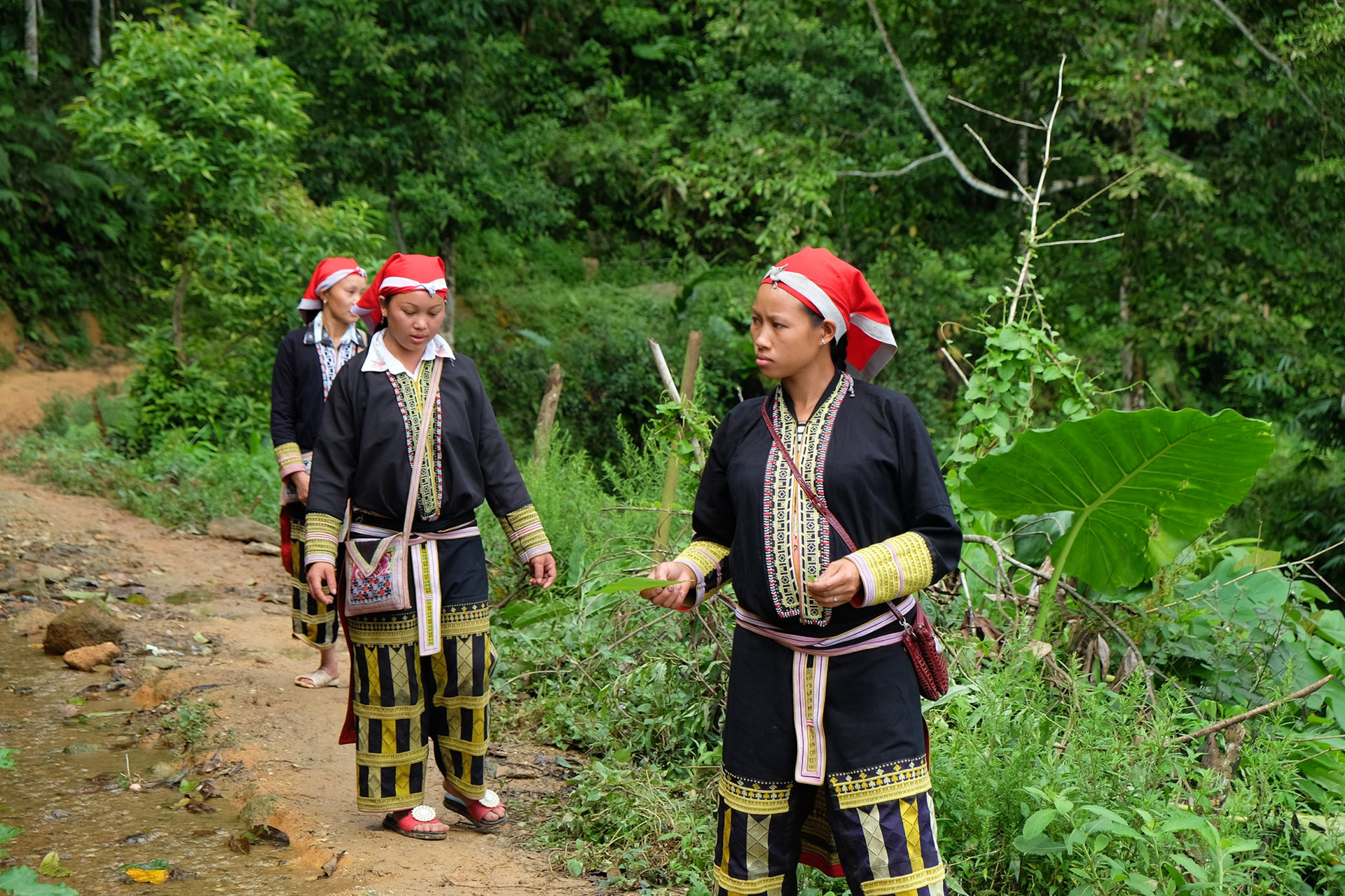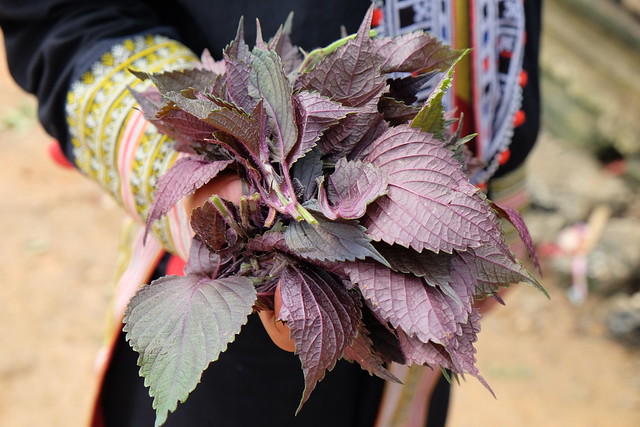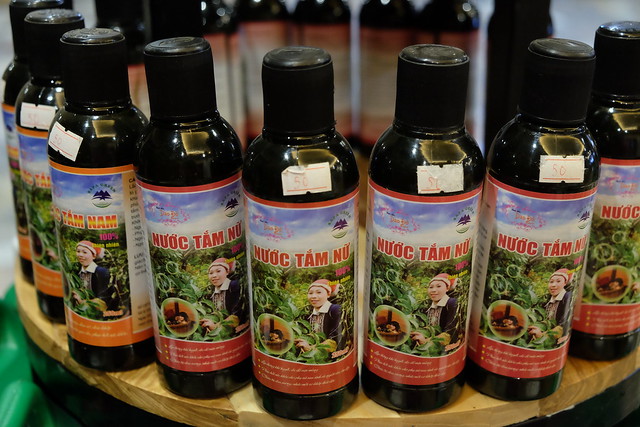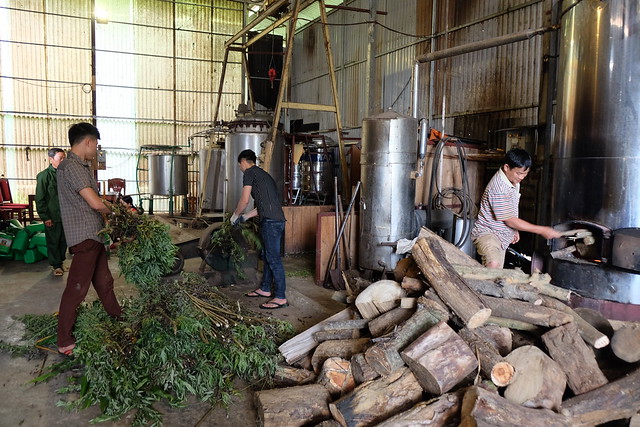Lo Lo May, of the Dao ethnic minority in North Viet Nam, has returned from the forest to the village with the other five members of her harvesting team. Two of the women carry big baskets on their backs, filled to the brim with a mixture of ferns, leaves and other plant material. A closer inspection reveals medicinal and aromatic plants, carefully selected by trained eyes. The women know what they are looking for, and where to find it. In fact, they know all corners of the forests and the snaking brooks, like the back of their hand.
To the six women and their community in Chu Kan Ho village, high up in the mountains of Lao Cai province, bordering China, the forest is essential to their well-being. Viet Nam’s medicinal plants have been called a “green goldmine” and are a critical component of the ecosystem services that the Dao ethnic group derive from the forests. Yet, these services have come under threat in recent decades as forests have been heavily exploited. Lo Lo May and her fellow collectors are painfully aware of the relationship between forest destruction and the loss of medicinal plants as well as other important goods and services that forests can bring to their community.
Traditional therapeutic medicine in Viet Nam has a long history. Treatments based on medicinal plants are still often used in addition to, or even instead of, allopathic medicine by many Vietnamese. Viet Nam is home to an estimated 12,000 species of high-value plants, of which 10,500 have been identified. Approximately 36 percent of those are known to have medicinal properties. Herbal and aromatic plants are used to make soaps, bath solutions and medicines, such as balms for pain relief, and also supply modern pharmaceutical production chains. For Lo Lo May and the Dao ethnic group, these herbs and plants are used daily for their ‘health baths’, and by midwifes and mothers, during and after childbirth. Indeed, such benefits are well-known throughout the country.

The “green goldmine” under threat
Since the mid-1990s, several once-abundant medicinal plants have been threatened with extinction from over-exploitation. In this respect, Viet Nam’s experience is similar to that of many other countries in the region, such as with blueberries in Mongolia and gaharu (agarwood or aloeswood) in Indonesia in the early 1990s. In Lao Cai and neighboring provinces, many fresh and processed products are sold domestically and to the Chinese markets just across the border, and demand is growing. As a result, what used to take the women only a few hours to collect, now requires several days of searching in the forests. Although Viet Nam has tremendous potential as a grower and producer of herbal medicine, it has gone from being an exporter to an importer of medicinal materials.
Beyond the Dao ethnic group, other communities have also become aware of the effects of forest destruction and over-exploitation and the dangers the “green goldmine” is facing. In 2017, Prime Minister Nguyễn Xuân Phúc urged government agencies and actors nationwide to develop measures to protect and promote traditional herbal medicines. He affirmed that such medicines are a treasure of the country, which can contribute to poverty reduction. He asked for solutions to tackle challenges in value and marketing chains, lower risks of extinction of many rare herbal plants, and careful use of advanced technology.

A new form of treatment, for an old condition
Alliances by non-government organizations (NGO), Forest Protection Departments and local pharmaceutical companies have responded to the call for action. Jointly with local people, they have developed species and area management plans, enhanced capacities and benefit flows from the forest to the people. These initiatives are supported by, and aligned with, the new Forestry Law of 2017. This Law specifically prioritizes forest allocation to ethnic communities who have customary use of forests and recognizes communities as forest owners for the first time. The alliances have also helped to set up cooperatives to assist in the marketing of products.
When the UN-REDD Viet Nam Phase II Programme launched its pilot activities in Lao Cai province, it was the “green goldmine” that connected the issues of forest carbon, local livelihoods and forest land tenure, presenting a promising formula for sustainable forest management.
Until recently, the forests in Tong Sanh commune were nominally managed by the Commune People’s Committee (CPC), which was unable to stop degradation. The formal transition of rights to 545 ha of forests from the CPC to five local villages, with assistance from the UN-REDD Programme, has led to a significant transformation. Formal rights to the forests motivated the villages to develop and implement their own forest management regulations.
The presence of medicinal plants provided significant additional motivation. A cooperative for forest and medicinal plants protection was established to facilitate collective marketing, to obtain fair prices, to be trained in forest protection, and to generate stable employment opportunities. The commune is now moving toward the establishment of a forestry cooperative operating under the Enterprise Law. Agreements or memoranda of understanding (MoU) are used to seal commitment to principles of nature conservation, sustainable consumption and development of medicinal materials, between the village cooperatives, private sector companies, and the concerned local authority. Such MoUs have involved private companies including the Hung Dung Trading Joint Stock Company (Sapa Green) and SAPANAPRO Joint Stock Company. The latter is the only community-owned social enterprise with more than one hundred ethnic minority shareholders.

Running the “green goldmine” successfully – further necessary steps
Lo Lo May, who has become a deputy leader of their cooperative group, is happy with the commitment the companies have made to pay a fair price for their products. And she adds that she also enjoys patrolling the forest.
The groundwork has been laid and the era of forest destruction looks to be behind them, at least for the moment. But sustaining this win-win formula will require further investments and innovation. So far, training has been directed particularly at strengthening planning and management capacities. While such capacities are important, cooperatives need to be sufficiently versed and skilled, as well as empowered, to negotiate with other stakeholders to strengthen their rights to land and resources.
Finally, systematic monitoring and evaluation of the pilot in Tong Sanh commune is crucial, especially in view of the impacts on livelihood improvement, poverty reduction and broader environmental benefits that go beyond forest carbon. This should go in conjunction with the requirements under Decree No.: 59/2017/NĐ-CP “On the Management and Access to Genetic Resources and the Sharing of Benefits Arising from Their Utilization”. Without rigorous monitoring, no lessons will be learned and Viet Nam’s traditional medicine from the forest could be in danger of being lost for current, as well as future generations.




